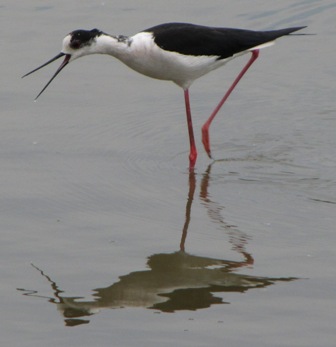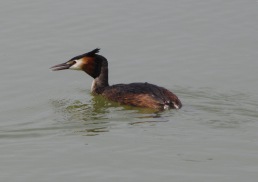Remember my post/page on celastrol (from the thunder of god vine)? Well, for a memory refresher, you can scroll down my Pages to the one titled: Other anti-myeloma/cancer substances.
At any rate, a few weeks ago, looking through the table of contents for the April 23 edition of “Blood,” I came across a study discussing a related compound (Sherlock, grazieee!, sent me the full study): pristimerin, a naturally-occuring substance that has strong anti-myeloma activity. See abstract: http://tinyurl.com/dbr36b
Since one of the proliferation factors involved in myeloma is cyclin D, a group of researchers from different cancer institutions conducted high-throughput chemical library screens for compounds that induce suppression of cyclin D2 promoter transcription. The top-ranked compound was a natural triterpenoid, pristimerin.
A natural triter…huh? No worries, I looked it up. Triterpenoids (hehe, try saying “triterpenoid” ten times FAST!) are biologically active, anti-inflammatory, anticancer and antioxidant compounds extracted from many plants, e.g. from the Celastrus and Maytenus species. Remember my posts/pages on glycyrrhizin, ursolic acid, betulinic acid, celastrol and oleanolic acid? Well, these substances are triterthingies, too. Okay, with that matter cleared up, let’s give this thing a go.
From the abstract we learn that pristimerin strongly inhibits proteasomes. (Ah, just like bortezomib and, ta-da!, curcumin.) In fact, I found a 2008 study on that very topic: http://tinyurl.com/pct6y7 The abstract tells us that pristimerin has been used for ages in folk medicine as an anti-inflammatory remedy. Now, where have I heard THAT before…? Anyway, in addition to killing breast cancer cells, pristimerin also targets proteasomes in prostate cancer cells. Well, well…
Okay, back to the April 2009 “Blood” study. Interesting titbit: pristimerin’s anti-proteasome activity occurs even at low concentrations. Furthermore, this substance inhibits our old enemy, hyperactive NF-kappaB, as well as cyclin D expression. In fact, it does such a good inhibiting job that the researchers make the following statement: As a consequence, pristimerin induces selective myeloma cell apoptosis in vitro and in vivo with greater potency than that described for other antineoplastic triterpenoids such as celastrol or CDDO, which are currently in clinical trials. Not bad, eh…
Okay, let’s get to the good stuff. In lab tests, pristimerin caused substantial suppression of all the cyclin D proteins. Even myeloma-friendly cytokines such as IL-6 could not protect myeloma cells from certain death. Hah!
Pristimerin was tested in vivo, too…specifically, on…gee, one guess!…nude mice with implanted plasmacytomas. The first experiment showed that high doses of pristimerin were too toxic…the mice had to be put out of their misery. So the researchers developed a liposomal formulation, which turned out to be less toxic and better tolerated in a second mice-based experiment. Result: Statistically significant tumor growth inhibition occurred at pristimerin doses of 2 to 3 mg/kg intravenously twice weekly, compared with vehicle-treated mice.
Pristimerin also worked in synergy with bortezomib. The two substances alone were less effective than when combined.
In the study’s Discussion, the researchers declare that pristimerin possesses substantial antimyeloma cytotoxic activity […] with a potency more than 10-fold that of CDDO or betulinic acid for solid organ malignancies, and more than 2- to 3-fold that of CDDO for multiple myeloma,39 and that pristimerin is synergistically cytotoxic with bortezomib, perhaps the most active antimyeloma agent in the clinic today.
Further on, they add that Uniquely, we find that pristimerin induces significant proteasome inhibition, which likely contributes to both its inhibition of NF-kB pathway signaling and specific cytotoxicity in myeloma. To our knowledge, no other triterpenoid has been demonstrated to inhibit proteosome function, although such activity could perhaps account for some of the activities of cytotoxic triterpenoids. Using in vitro and in vivo studies, we demonstrate that pristimerin causes selective antimyeloma cytotoxicity, within a therapeutic window, identifying it as a lead compound for the development of enhanced triterpenoid-derived anticancer pharmaceuticals.
They also raise the possibility that pristimerin might be able to overcome myeloma’s well-known ability to become resistant to conventional treatments.
Well, this is simply an introductory report on yet another promising anti-myeloma substance extracted from plants. Clearly, more research and testing are needed…and no, I am not ready to fly to China, hunt down and munch on the roots of Celastrus hypoleucus, a pristimerin-containing plant…nope, not yet!
A few links to pristimerin studies
1. “Antiproliferative activity of pristimerin isolated from Maytenus ilicifolia (Celastraceae) in human HL-60 cells,” 2008: http://tinyurl.com/rbukj5
2. Triterpenoids and doxorubicin, 2006: http://tinyurl.com/qzahub
3. Anti-cytomegalovirus activity of pristimerin, 2007: http://tinyurl.com/q83kmy
4. Antifungal properties of pristimerin and celastrol, 2005: http://tinyurl.com/o99rrg
5. More information on triterpenoids, 1986: http://tinyurl.com/db8cde



 For the past few days (it was a long holiday weekend in Italy), Stefano and I have been cleaning the house and rearranging things. From early morning until dinnertime. We have also begun the yearly chore of weeding and cleaning up our organic garden. Every muscle in my body aches, even muscles that I didn’t know existed…but we are pleased with the results (so far…we aren’t done yet!), and that’s what counts. Anyway, I have had almost no time to check my e-mail and even less time to do any research…oh well.
For the past few days (it was a long holiday weekend in Italy), Stefano and I have been cleaning the house and rearranging things. From early morning until dinnertime. We have also begun the yearly chore of weeding and cleaning up our organic garden. Every muscle in my body aches, even muscles that I didn’t know existed…but we are pleased with the results (so far…we aren’t done yet!), and that’s what counts. Anyway, I have had almost no time to check my e-mail and even less time to do any research…oh well.